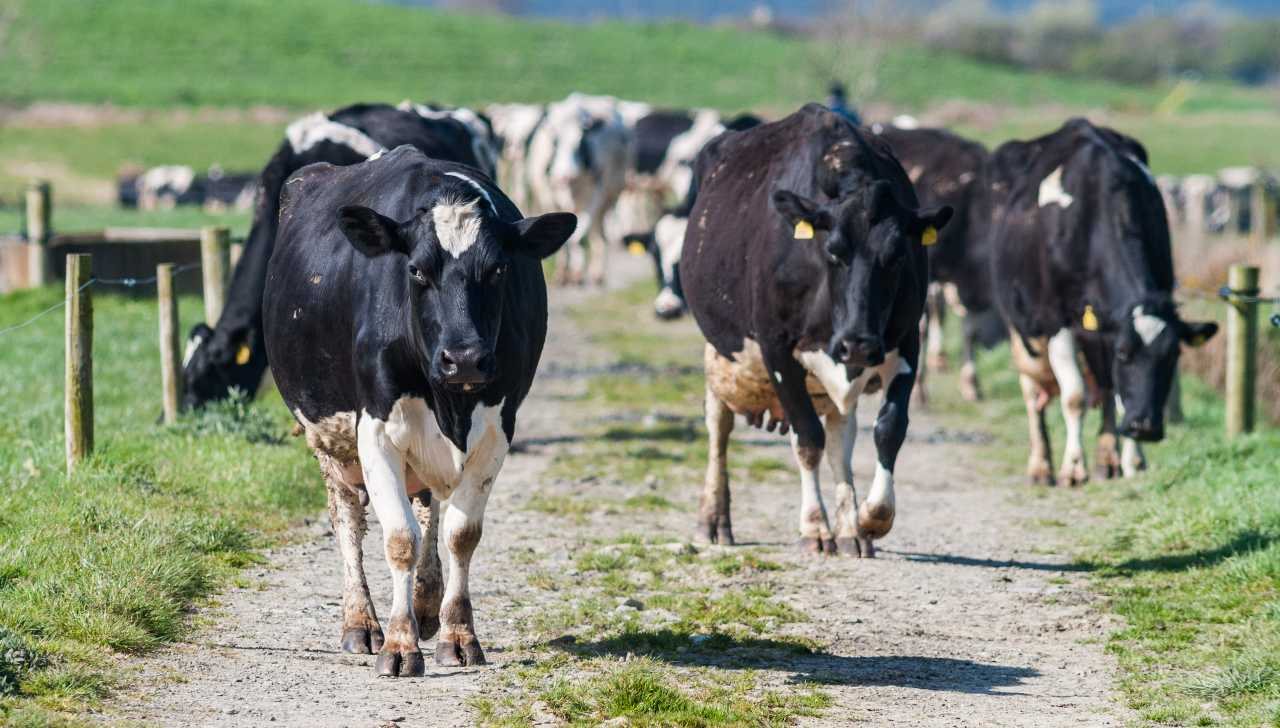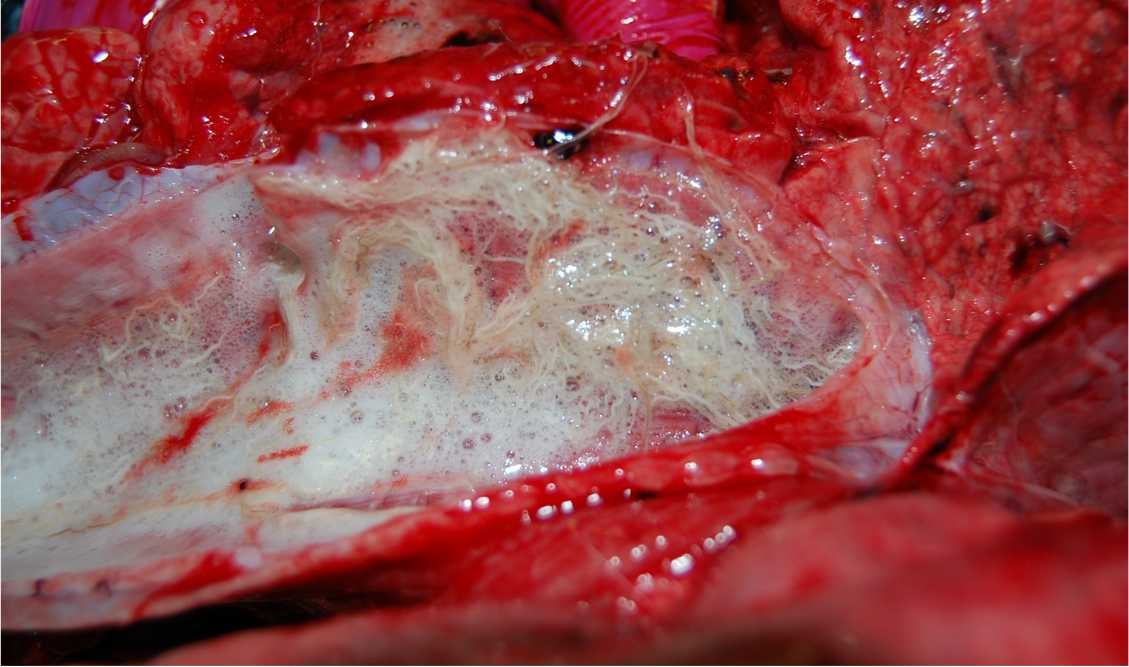Combatting the threat of lungworm in adult cows

The cattle lungworm, Dictyocaulus viviparus is an unpredictable and potentially deadly parasite. It has a widespread distribution across the UK, but producers may not be aware of their herd’s lungworm status since its presence does not always lead to clinical disease.
Cattle become infected with lungworm by ingesting larvae from contaminated pasture. The worm’s development outside the host is heavily influenced by weather conditions, which in turn determine patterns of disease. Warm, wet weather favours development and survival of larvae, whilst hot, dry weather causes desiccation and death of larvae that have migrated onto the grass in a matter of days, reducing the risk of infection. However, larvae may remain protected within the moist core of crusted dung pats. Sudden heavy rain can lead to their release onto the pasture, resulting in high challenge and potential outbreaks of parasitic bronchitis, or husk.
Increasingly unpredictable
There is evidence that changing patterns of disease may mean that the threat lungworm poses to UK dairy herds is increasing.1 Over the last 40 years there has been an increase in the number of reported cases, particularly in Scotland. Outbreaks are now seen in Spring and Autumn, outside the traditional window of July to August, particularly in Wales and the South-West. To compound this, husk has gone from being a disease of youngstock, to a condition which also frequently affects adult dairy cattle.
The reasons for this shift are poorly understood, factors such as climate change and management practices may have played a role. This changing landscape means that that producers cannot afford not to address the specific risk of lungworm as part of a parasite control plan.
Within the host
After ingestion, the larvae break out of the small intestine and migrate through the lymphatic system to the lungs. They mature as they travel up through the airways, developing to egg-laying adults within 3-4 weeks of infection.
Low level exposure to the parasite can induce immunity without disease, but a heavy challenge can result in severe respiratory compromise. Clinical signs, such as coughing and increased respiratory rate can occur as soon as the larvae reach the lungs, as early as 10 days post-infection. Severe cases can lead to secondary infection, permanent lung damage and death.
As well as causing clinical disease, lungworm can have a significant impact the performance as of dairy cattle - a sudden milk drop can precede other clinical signs. The overall economic impact of an outbreak has been estimated at approximately £140 per adult cow in the herd, with milk production losses amounting to 4kg/cow/day.2

Immunity
Whether or not lungworm causes clinical disease rest on achieving a fine balance between challenge and immunity. Exposed animals develop two levels of immunity:
- A first line of defence which prevents immature larvae from migrating to the lungs. This develops rapidly after exposure (or vaccination) but is relatively short-lived, lasting approximately 6 months.
- A second level of defence which eliminates larvae and adults from the lungs. This is slower to develop but can persist for years after infection.
Although the reasons behind the increased risk of disease in adult cows are poorly understood it is likely to stem from reduced or destabilised immunity. A wide range of factors can contribute to this, including changes in heifer management that limit exposure to lungworm before they enter the milking herd. Rotational grazing practices can lead to heavy pasture contamination; whilst introduction of naïve animals to an infected herd, or infected animals to a naïve herd can rapidly result in disease.
Reinfection syndrome, which occurs when cattle are exposed to a lungworm challenge after their first line immunity to infection has waned, can be an important component of disease in adult cattle. In these animals, the long-lasting, second level of immunity prevents invading larvae from developing into adults but can result in severe lung inflammation.
Treatment and control
Adopting an integrated approach to lungworm control is essential in both dairy youngstock and adult cows on farms where lungworm is endemic. The objective of this should be to reduce reliance on treatments by assessing and managing the risk and promoting the development of effective immunity.
Vaccination can be a useful first step in cattle of all ages. However, it can also pose practical challenges as both doses must be administered ahead of turnout and ongoing protection relies on low-level exposure to boost immunity during the grazing season.
Strategic gutworm treatments administered during the grazing season may also control lungworm, but there is no guarantee that the risk period for these different types of parasite will coincide, and disease may still occur at other times of the year.
A vigilance-based approach can overcome this risk. Often, earliest signs of lungworm in dairy cows at grass is a deep, dry cough heard when they are brought in for milking. Picking up on this early and seeking advice from a vet or animal health adviser, can help ensure early, targeted treatment of the whole group. Testing of faecal samples for the presence of larvae can confirm the diagnosis, although they may not be detectable early in the course of disease or in cases of reinfection syndrome.
When it comes to treatment, products from all the three major wormer groups, are effective against adult and immature stages of lungworm. However, macrocyclic lactones have persistent effects, which can protect cattle from further infection for a period after treatment. Practical considerations may also influence product choice, for example, a topical treatment may be preferable to an oral drench in animals that have respiratory compromise. Only products containing eprinomectin have a zero milk withhold, allowing treatment at the optimal time, without concerns over lost milk.
An educational service from Boehringer Ingelheim Animal Health UK Ltd (“BI”). Further information available from BI, RG12 8YS, UK. ©2021. All rights reserved. Date of preparation: March 2022. UI-BOV-0124-2021. Use Medicines Responsibly.
References
- McCarthy & van Dijk (2020) Vet Rec 186: 642
- Holzhauer et al (2011) Vet Rec 169: 494
- 1st July 2022
